Image
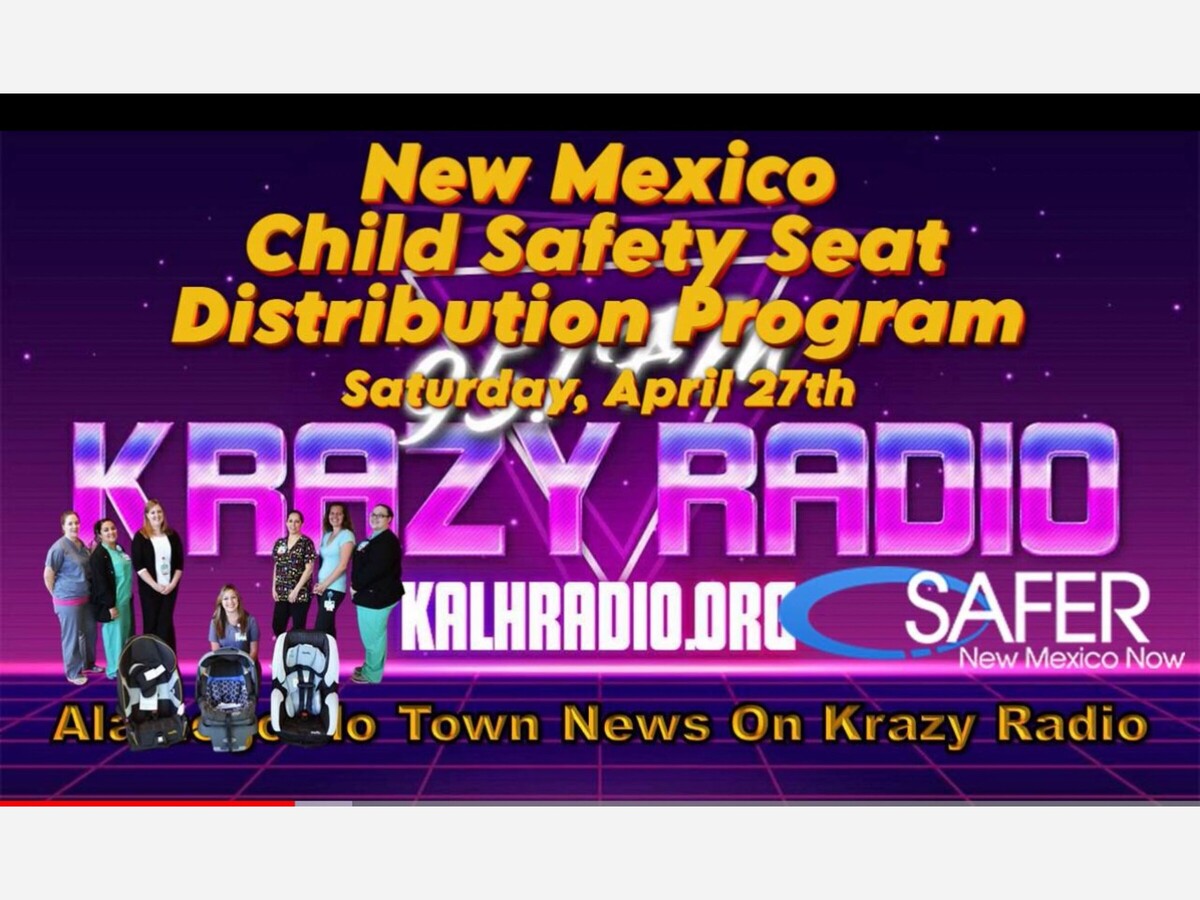

Car seat safety is a priority for children in motor vehicles to protect them from injury during accidents. Did you know car seats have an expiration date? The safety material within a car seat degrades over time and every car seat “has an expiration date on it” we learned from a phone interview with Dominic Avalon in an interview with AlamogordoTownNews.com on KRAZY KALHRadio.org with Anthony Lucero…
Upcoming coming safety updates and inspection opportunity coming to Tularosa. The New Mexico Department of Transportation Traffic Safety Division (NMDOT TSD) and Safer New Mexico Now will host an in-person Car Seat Inspection Clinic from 10 a.m. to 12 p.m., Saturday, April 27, 2024, at the NMDOT Tularosa Patrol Yard, 7679, US 54/70
This free educational event provides parents and caregivers instruction on the proper selection, installation and use of their car seats from nationally certified Child Passenger Safety Technicians (CPSTs).
At the event, CPSTs will spend approximately 30 minutes per seat educating parents on the proper selection, installation, and use of their car and booster seats. Parents and caregivers will also learn important information regarding common errors in car seat safety and be able to ask questions. If a technician determines a car seat to be recalled, expired, or otherwise unsafe, replacement seats willbe available.
To participate in the Car Seat Inspection Clinic, parents and caregivers should bring their car seat, car seat manual, vehicle manual, and the child should be present if possible. Car seat inspections are first come first served and appointments are not necessary.
Car Seat Inspection Clinics are a free public service funded by the NMDOT Traffic Safety Division and are available to everyone. The child must be present to be considered for a seat replacement. A $35 seat replacement fee may apply. For more information, please call (800) 231-6145 or (505) 856-6143.
In 2021, 711 child passengers ages 12 and younger were killed in motor vehicle crashes in the United States, and in 2020 more than 63,000 were injured Of the children who were killed in a crash, 36% were not buckled up per the CDC.
Parents and caregivers can make a lifesaving difference by ensuring that their children are properly buckled on every trip.
Per the CDC Know the Stages of car seat safety
CDC provides guidance to ensure children are properly buckled in a car seat, booster seat, or seat belt—whichever is appropriate for their age, weight, and height.
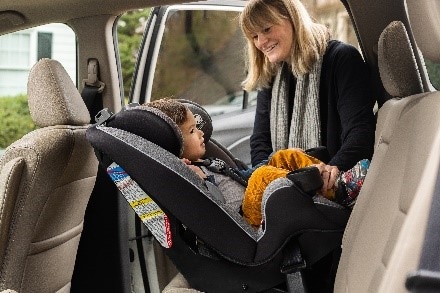
Stage 1. Rear-facing car seat: Birth until age 2–4.
Infants and toddlers should be buckled in a rear-facing car seat with a harness, in the back seat, until they reach the maximum weight or height limit of their car seat. This offers the best possible protection.44,45 Check the car seat manual and labels on the car seat for weight and height limits.
Never place a rear-facing car seat in the front seat. Front passenger air bags can injure or kill young children in a crash.
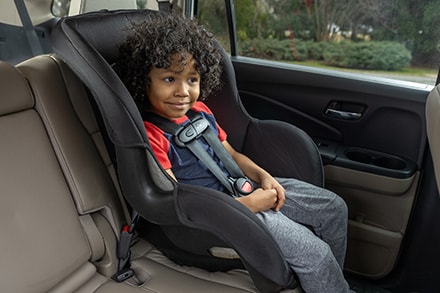
Stage 2. Forward-facing car seat: After outgrowing their rear-facing car seat and until at least age 5.
When children outgrow their rear-facing car seat, they should be buckled in a forward-facing car seat with a harness and a top tether, in the back seat. They should stay in their forward-facing car seat until they reach the maximum weight or height limit of their seat. Check the car seat manual and labels on the car seat for weight and height limits.
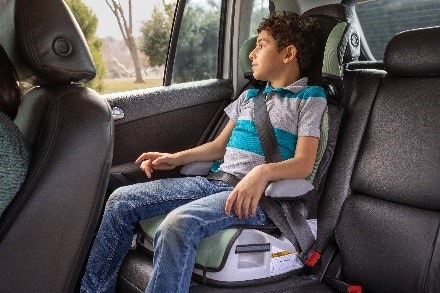
Stage 3. Booster seat: After outgrowing their forward-facing car seat and until the seat belt fits properly.
When children outgrow their forward-facing car seat, they should be buckled in a belt-positioning booster seat with a seat belt, in the back seat. They should continue to use a booster seat until the seat belt fits properly without a booster seat. A seat belt fits properly when the lap belt is across the upper thighs (not the stomach) and the shoulder belt is across the center of the shoulder and chest (not across the neck or face, and not off the shoulder). This usually occurs when children are between 9 and 12 years old.
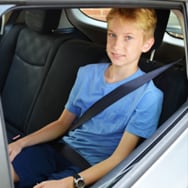
Stage 4. Seat belt: When the seat belt fits properly without a booster seat.
Children no longer need to use a booster seat when the seat belt fits them properly. A seat belt fits properly when the lap belt is across the upper thighs (not the stomach) and the shoulder belt is across the center of the shoulder and chest (not across the neck or face, and not off the shoulder). This usually occurs when children are between 9 and 12 years old.
Source: AlamogordoTownNews.com, Center for Disease Control, New Mexico Department of Transportation Traffic Safety Division